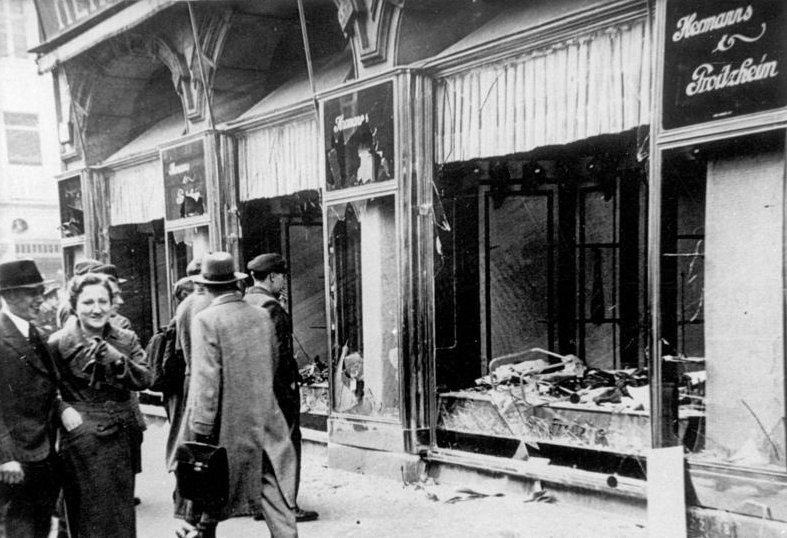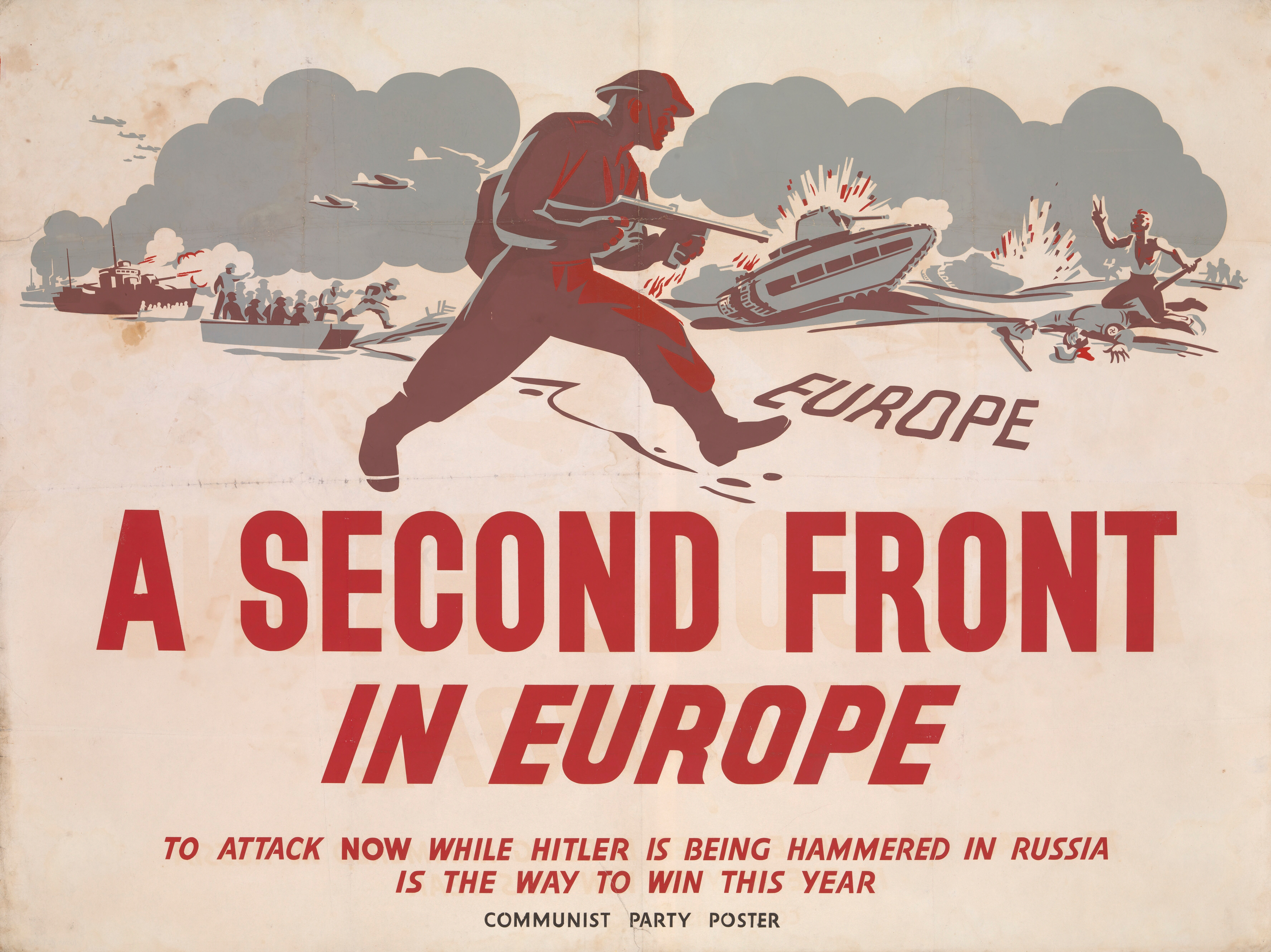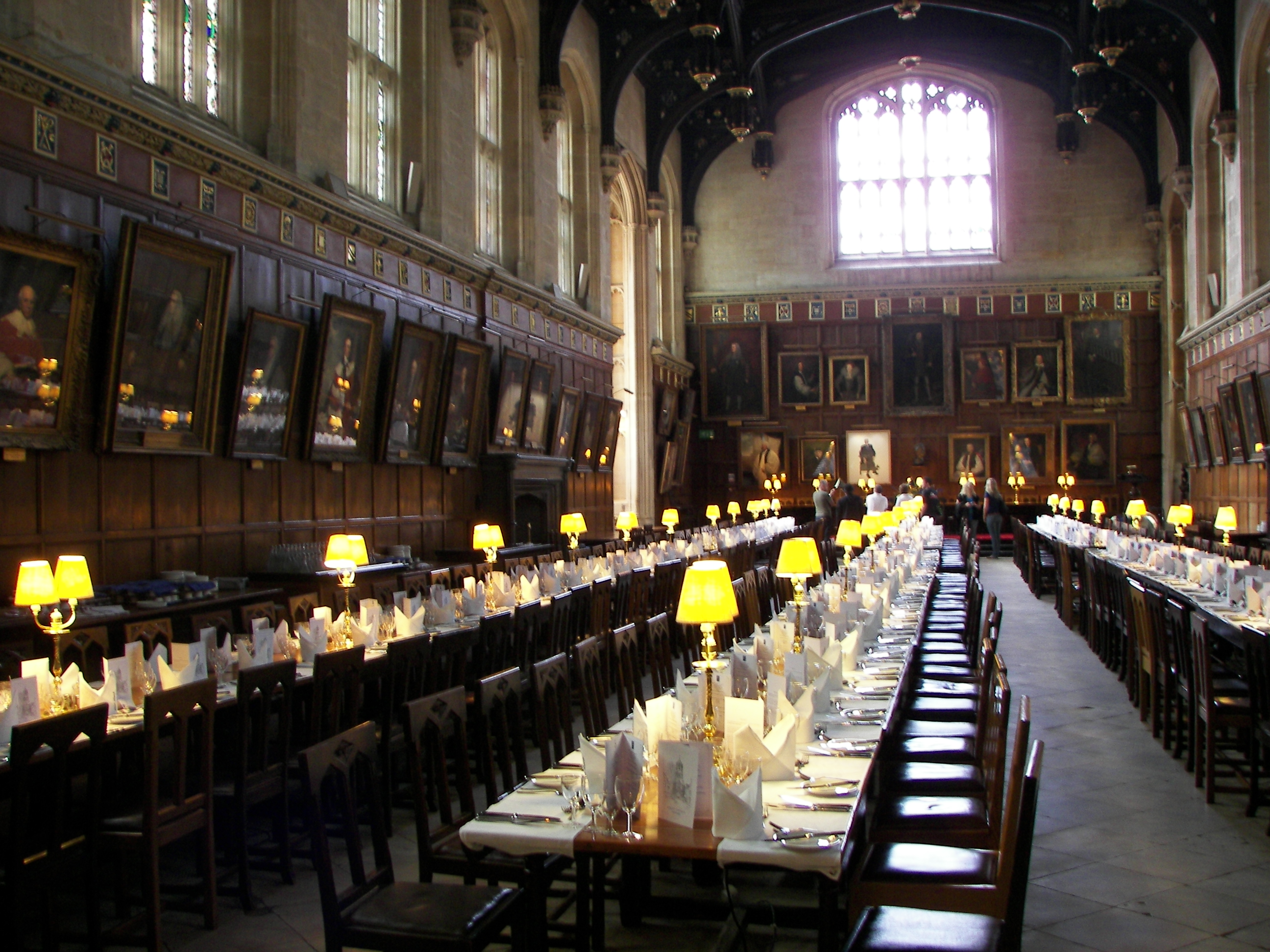|
A Child Of Our Time
''A Child of Our Time'' is a secular oratorio by the British composer Michael Tippett (1905–1998), who also wrote the libretto. Composed between 1939 and 1941, it was first performed at the Adelphi Theatre, London, on 19 March 1944. The work was inspired by events that affected Tippett profoundly: the assassination in 1938 of a German diplomat by a young Jewish refugee, and the Nazi government's reaction in the form of a violent pogrom against its Jewish population: Kristallnacht. Tippett's oratorio deals with these incidents in the context of the experiences of oppressed people generally, and carries a strongly pacifist message of ultimate understanding and reconciliation. The text's recurrent themes of shadow and light reflect the Jungian psychoanalysis which Tippett underwent in the years immediately before writing the work. The oratorio uses a traditional three-part format based on that of Handel's ''Messiah'', and is structured in the manner of Bach's Passions. The work' ... [...More Info...] [...Related Items...] OR: [Wikipedia] [Google] [Baidu] |
Bundesarchiv Bild 146-1970-083-42, Magdeburg, Zerstörtes Jüdisches Geschäft
The German Federal Archives or Bundesarchiv (BArch) (german: Bundesarchiv) are the National Archives of Germany. They were established at the current location in Koblenz in 1952. They are subordinated to the Federal Commissioner for Culture and the Media (Claudia Roth since 2021) under the German Chancellery, and before 1998, to the Federal Ministry of the Interior (Germany), Federal Ministry of the Interior. On 6 December 2008, the Archives donated 100,000 photos to the public, by making them accessible via Wikimedia Commons. History The federal archive for institutions and authorities in Germany, the first precursor to the present-day Federal Archives, was established in Potsdam, Brandenburg in 1919, a later date than in other European countries. This national archive documented German government dating from the founding of the North German Confederation in 1867. It also included material from the older German Confederation and the Imperial Chamber Court. The oldest documents i ... [...More Info...] [...Related Items...] OR: [Wikipedia] [Google] [Baidu] |
Malcolm Sargent
Sir Harold Malcolm Watts Sargent (29 April 1895 – 3 October 1967) was an English conductor, organist and composer widely regarded as Britain's leading conductor of choral works. The musical ensembles with which he was associated included the Ballets Russes, the Huddersfield Choral Society, the Royal Choral Society, the D'Oyly Carte Opera Company, and the London Philharmonic, Hallé, Liverpool Philharmonic, BBC Symphony and Royal Philharmonic orchestras. Sargent was held in high esteem by choirs and instrumental soloists, but because of his high standards and a statement that he made in a 1936 interview disputing musicians' rights to tenure, his relationship with orchestral players was often uneasy. Despite this, he was co-founder of the London Philharmonic, was the first conductor of the Liverpool Philharmonic as a full-time ensemble, and played an important part in saving the Royal Philharmonic Orchestra from disbandment in the 1960s. As chief conductor of London's ... [...More Info...] [...Related Items...] OR: [Wikipedia] [Google] [Baidu] |
Concerto For Double String Orchestra (Tippett)
Michael Tippett's ''Concerto for Double String Orchestra'' (1938–39) is one of his most popular and frequently performed works. Background Like other works of the composer's early maturity such as the First Piano Sonata and the First String Quartet, the Concerto is characterized by rhythmic energy and a direct melodic appeal. Representing both a meeting point for many of his early influences and a release for the catalytic experiences that defined the decade after leaving London and the Royal College of Music, the Concerto was an experiment in multiplicities, where the diversity of the thematic material (invented and imported) became synthesized through the timbral unity of the ensemble—two ensembles in fact, a further manifestation of the opposition and divisions contributing to the work’s multi-dimensionality. Tippett identified the polyrhythms and Northumbrian elements in the piece as coming from the influence of Jeffrey Mark, who he had met while at the RCM. The piece is ... [...More Info...] [...Related Items...] OR: [Wikipedia] [Google] [Baidu] |
John Layard
John Willoughby Layard (27 November 1891 – 26 November 1974) was an English anthropologist and psychologist. Early life Layard was born in London, son of the essayist and literary writer George Somes Layard and his wife Eleanor. He grew up first at Malvern, and in c 1902 moved to Bull's Cliff, Felixstowe. He was educated at Bedales School. In Suffolk Layard came under the influence of his aunt, the poet and archaeologist Nina Frances Layard, who had become established in Ipswich in 1889. With his mother Eleanor he occasionally assisted Nina Layard in her searches for palaeoliths in the Ipswich area, and through her was introduced to Professor A. C. Haddon of Cambridge. She also had direct contacts with Professors William Ridgeway and McKenny Hughes, and with Wynfrid Laurence Henry Duckworth. Her companion, Mary Outram (granddaughter of Sir James Outram), was a cousin of Baron Anatole von Hügel, who was then setting up the University of Cambridge Museum of Archaeology and ... [...More Info...] [...Related Items...] OR: [Wikipedia] [Google] [Baidu] |
Wilfred Franks
Wilfred Florestan Franks (1908–2003) was a British artist, designer, sculptor, dancer and actor. He married Daphne Rudd in 1951 Biography Franks trained at the Staatliche Bauhochschule (de) in Weimar, Germany from 1929 to 1930. He also attended classes at the Bauhaus art school in Dessau, although he was not officially enrolled at the school. On his return to England Franks worked with a mining community in the Village of Boosbeck in the northeast of England, teaching a group of unemployed miners how to design and make furniture. It was through his involvement with Boosbeck that Franks got to know the composer Michael Tippett. Franks and Michael Tippett were involved in an intense love affair during the 1930s, and Tippett dedicated his String Quartet No.1 to Franks. Tippett remarked: "Meeting with Wilf was the deepest, most shattering experience of falling in love: and I am quite certain that it was a major factor underlying the discovery of my own individual musical ‘vo ... [...More Info...] [...Related Items...] OR: [Wikipedia] [Google] [Baidu] |
Stalinism
Stalinism is the means of governing and Marxist-Leninist policies implemented in the Soviet Union from 1927 to 1953 by Joseph Stalin. It included the creation of a one-party totalitarian police state, rapid industrialization, the theory of socialism in one country, collectivization of agriculture, intensification of class conflict, a cult of personality, and subordination of the interests of foreign communist parties to those of the Communist Party of the Soviet Union, deemed by Stalinism to be the leading vanguard party of communist revolution at the time. After Stalin's death and the Khrushchev thaw, de-Stalinization began in the 1950s and 1960s, which caused the influence of Stalin’s ideology begin to wane in the USSR. The second wave of de-Stalinization started during Mikhail Gorbachev’s Soviet Glasnost. Stalin's regime forcibly purged society of what it saw as threats to itself and its brand of communism (so-called "enemies of the people"), which included ... [...More Info...] [...Related Items...] OR: [Wikipedia] [Google] [Baidu] |
Trotskyism
Trotskyism is the political ideology and branch of Marxism developed by Ukrainian-Russian revolutionary Leon Trotsky and some other members of the Left Opposition and Fourth International. Trotsky self-identified as an orthodox Marxist, a revolutionary Marxist, and Bolshevik–Leninist, a follower of Marx, Engels, and 3L: Vladimir Lenin, Karl Liebknecht, and Rosa Luxemburg. He supported founding a vanguard party of the proletariat, proletarian internationalism, and a dictatorship of the proletariat (as opposed to the " dictatorship of the bourgeoisie", which Marxists argue defines capitalism) based on working-class self-emancipation and mass democracy. Trotskyists are critical of Stalinism as they oppose Joseph Stalin's theory of socialism in one country in favour of Trotsky's theory of permanent revolution. Trotskyists criticize the bureaucracy and anti-democratic current developed in the Soviet Union under Stalin. Vladimir Lenin and Trotsky, despite their ideological disp ... [...More Info...] [...Related Items...] OR: [Wikipedia] [Google] [Baidu] |
Communist Party Of Great Britain
The Communist Party of Great Britain (CPGB) was the largest communist organisation in Britain and was founded in 1920 through a merger of several smaller Marxist groups. Many miners joined the CPGB in the 1926 general strike. In 1930, the CPGB founded the ''Daily Worker'' (renamed the ''Morning Star'' in 1966). In 1936, members of the party were present at the Battle of Cable Street, helping organise resistance against the British Union of Fascists. In the Spanish Civil War the CPGB worked with the USSR to create the British Battalion of the International Brigades, which party activist Bill Alexander commanded. In World War II, the CPGB mirrored the Soviet position, opposing or supporting the war in line with the involvement of the USSR. By the end of World War II, CPGB membership had nearly tripled and the party reached the height of its popularity. Many key CPGB members became leaders of Britain's trade union movement, including most notably Jessie Eden, Abraham Lazarus ... [...More Info...] [...Related Items...] OR: [Wikipedia] [Google] [Baidu] |
Grove Music Online
''The New Grove Dictionary of Music and Musicians'' is an encyclopedic dictionary of music and musicians. Along with the German-language ''Die Musik in Geschichte und Gegenwart'', it is one of the largest reference works on the history and theory of music. Earlier editions were published under the titles ''A Dictionary of Music and Musicians'', and ''Grove's Dictionary of Music and Musicians''; the work has gone through several editions since the 19th century and is widely used. In recent years it has been made available as an electronic resource called ''Grove Music Online'', which is now an important part of ''Oxford Music Online''. ''A Dictionary of Music and Musicians'' ''A Dictionary of Music and Musicians'' was first published in London by Macmillan and Co. in four volumes (1879, 1880, 1883, 1889) edited by George Grove with an Appendix edited by J. A. Fuller Maitland in the fourth volume. An Index edited by Mrs. E. Wodehouse was issued as a separate volume in 1890. In ... [...More Info...] [...Related Items...] OR: [Wikipedia] [Google] [Baidu] |
Counterpoint
In music, counterpoint is the relationship between two or more musical lines (or voices) which are harmonically interdependent yet independent in rhythm and melodic contour. It has been most commonly identified in the European classical tradition, strongly developing during the Renaissance and in much of the common practice period, especially in the Baroque period. The term originates from the Latin ''punctus contra punctum'' meaning "point against point", i.e. "note against note". In Western pedagogy, counterpoint is taught through a system of species (see below). There are several different forms of counterpoint, including imitative counterpoint and free counterpoint. Imitative counterpoint involves the repetition of a main melodic idea across different vocal parts, with or without variation. Compositions written in free counterpoint often incorporate non-traditional harmonies and chords, chromaticism and dissonance. General principles The term "counterpoint" has been us ... [...More Info...] [...Related Items...] OR: [Wikipedia] [Google] [Baidu] |
Adrian Boult
Sir Adrian Cedric Boult, CH (; 8 April 1889 – 22 February 1983) was an English conductor. Brought up in a prosperous mercantile family, he followed musical studies in England and at Leipzig, Germany, with early conducting work in London for the Royal Opera House and Sergei Diaghilev's ballet company. His first prominent post was conductor of the City of Birmingham Orchestra in 1924. When the British Broadcasting Corporation appointed him director of music in 1930, he established the BBC Symphony Orchestra and became its chief conductor. The orchestra set standards of excellence that were rivalled in Britain only by the London Philharmonic Orchestra (LPO), founded two years later. Forced to leave the BBC in 1950 on reaching retirement age, Boult took on the chief conductorship of the LPO. The orchestra had declined from its peak of the 1930s, but under his guidance its fortunes were revived. He retired as its chief conductor in 1957, and later accepted the post of pre ... [...More Info...] [...Related Items...] OR: [Wikipedia] [Google] [Baidu] |
Charles Herbert Kitson
Charles Herbert Kitson (13 November 1874 – 13 May 1944) was an English organist, teacher, and music educator, author of several books on harmony and counterpoint. Biography Kitson was born in Leyburn, Yorkshire, and attended school in Ripon. Intending originally to take holy orders, he took his BA (1896) and MA (1904) at Cambridge, where he was organ scholar of Selwyn College. Between those dates, he also took the BMus (1897) and DMus (1902) degrees at Oxford, as an external student. After teaching at Haileybury and St Edmund's School, Canterbury, he became organist of St John the Baptist, Leicester. His first important post was as organist at Christ Church Cathedral in Dublin, in 1913 – a post which he held until 1920 and which he combined with the post of Professor of Theory at the Royal Irish Academy of Music.Houston, Kerry: "Kitson, Charles Herbert", in: ''The Encyclopaedia of Music in Ireland'', ed. Harry White & Barra Boydell (Dublin: UCD Press, 2013), p. 57 ... [...More Info...] [...Related Items...] OR: [Wikipedia] [Google] [Baidu] |







